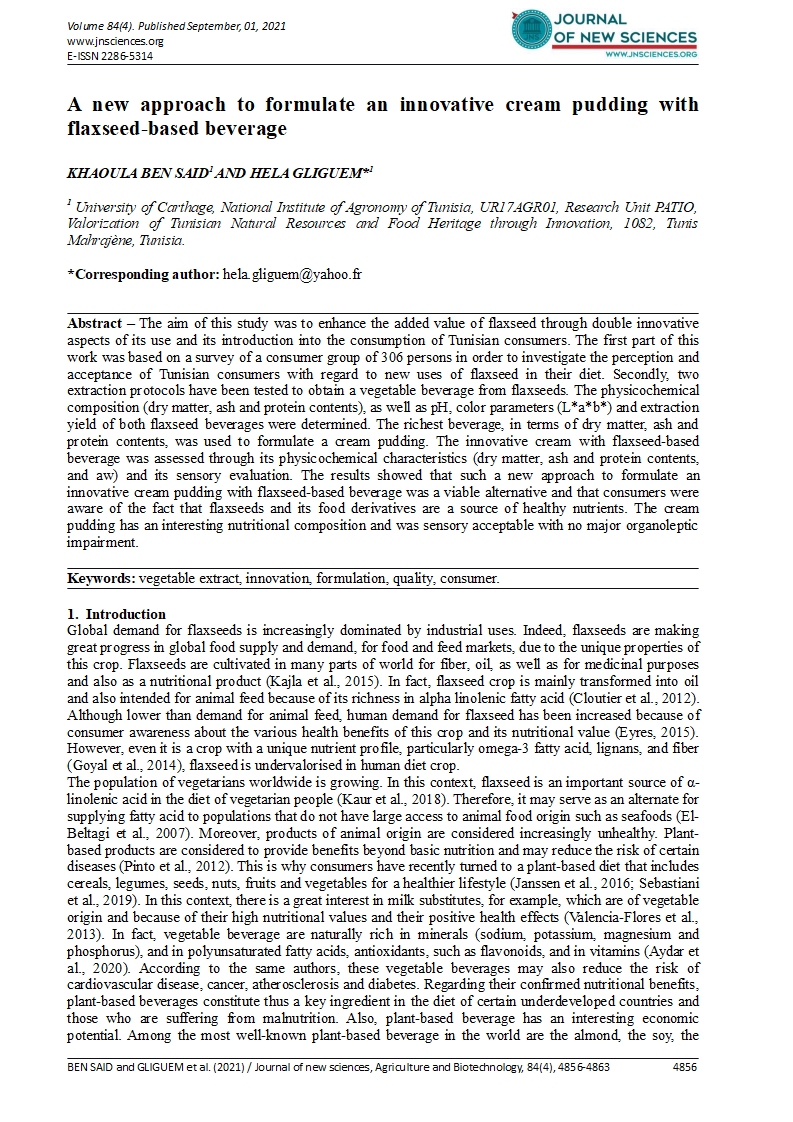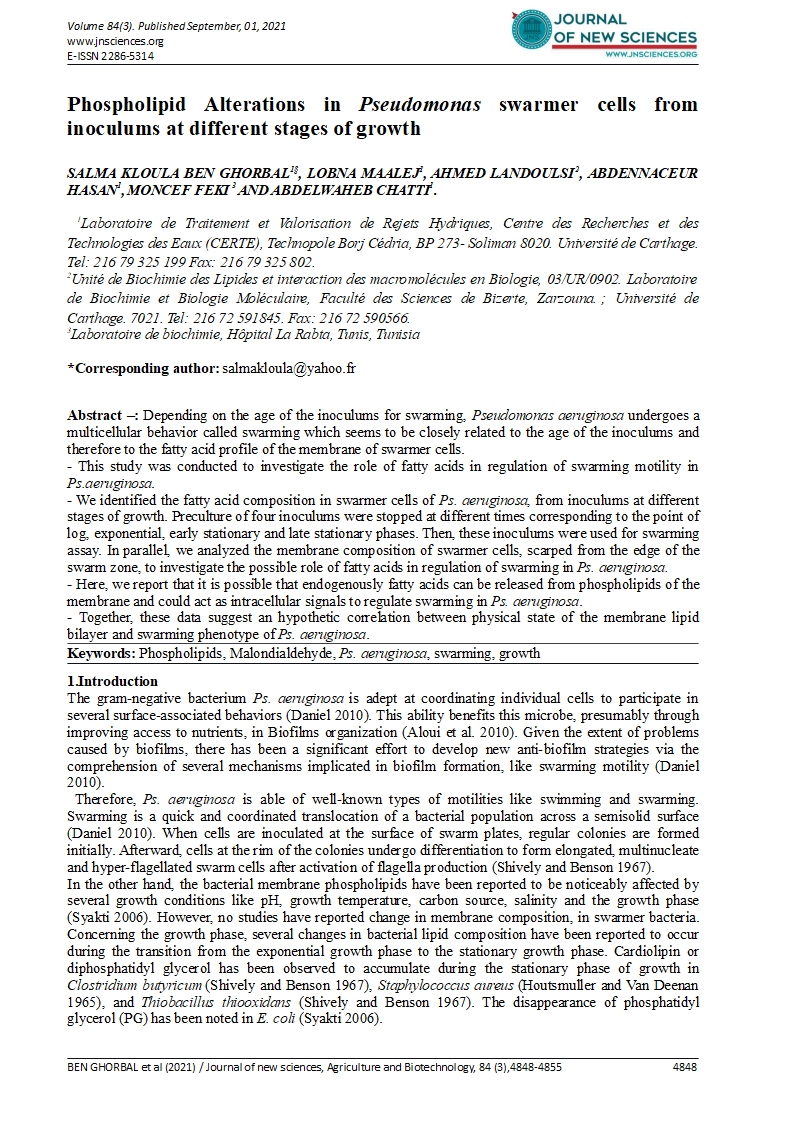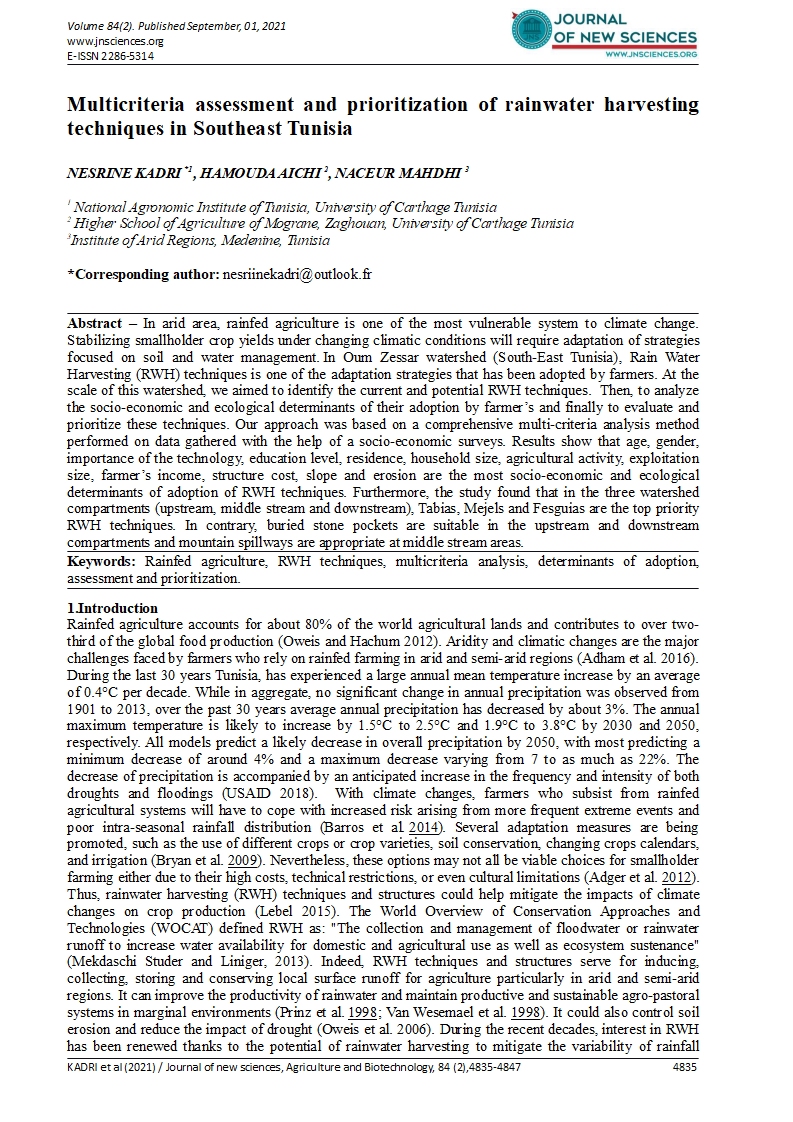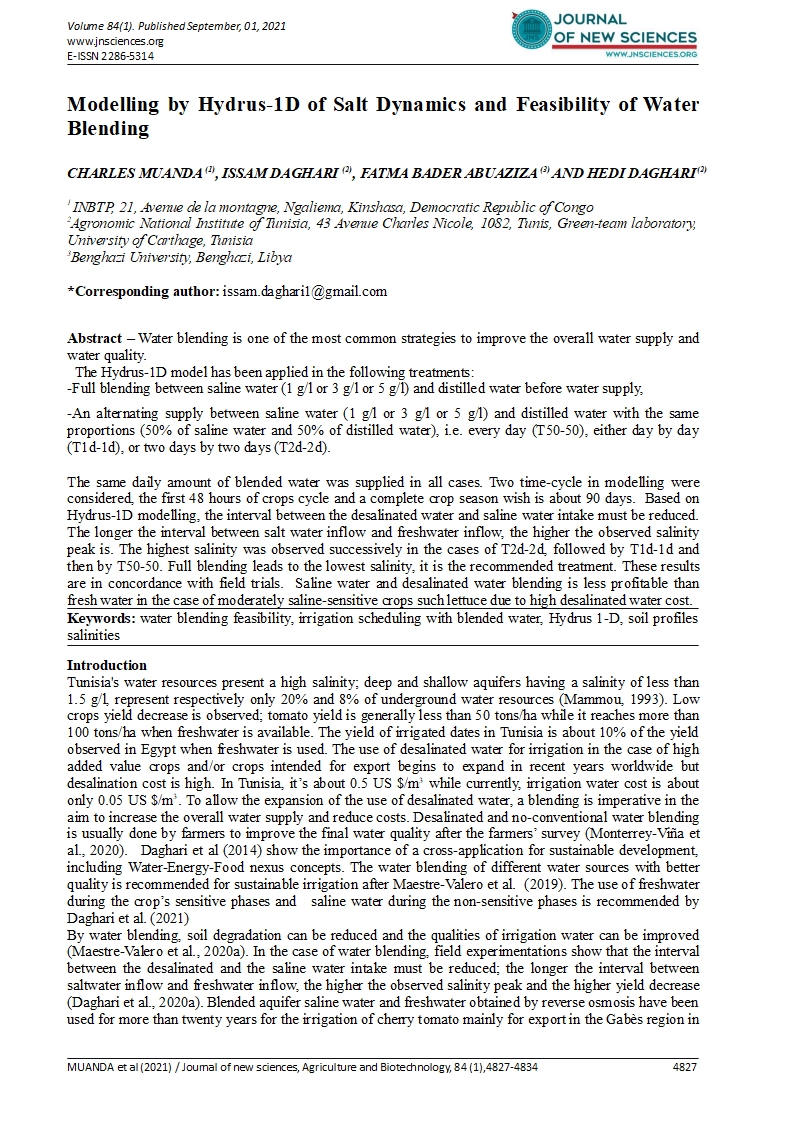- Category: Volume 84
- Hits: 2186
A new approach to formulate an innovative cream pudding with flaxseed-based beverage

KHAOULA BEN SAID1
HELA GLIGUEM1
1 University of Carthage, National Institute of Agronomy of Tunisia, UR17AGR01, Research Unit PATIO, Valorization of Tunisian Natural Resources and Food Heritage through Innovation, 1082, Tunis Mahrajène, Tunisia.
Abstract – The aim of this study was to enhance the added value of flaxseed through double innovative aspects of its use and its introduction into the consumption of Tunisian consumers. The first part of this work was based on a survey of a consumer group of 306 persons in order to investigate the perception and acceptance of Tunisian consumers with regard to new uses of flaxseed in their diet. Secondly, two extraction protocols have been tested to obtain a vegetable beverage from flaxseeds. The physicochemical composition (dry matter, ash and protein contents), as well as pH, color parameters (L*a*b*) and extraction yield of both flaxseed beverages were determined. The richest beverage, in terms of dry matter, ash and protein contents, was used to formulate a cream pudding. The innovative cream with flaxseed-based beverage was assessed through its physicochemical characteristics (dry matter, ash and protein contents, and aw) and its sensory evaluation. The results showed that such a new approach to formulate an innovative cream pudding with flaxseed-based beverage was a viable alternative and that consumers were aware of the fact that flaxseeds and its food derivatives are a source of healthy nutrients. The cream pudding has an interesting nutritional composition and was sensory acceptable with no major organoleptic impairment.
Keywords: vegetable extract, innovation, formulation, quality, consumer



